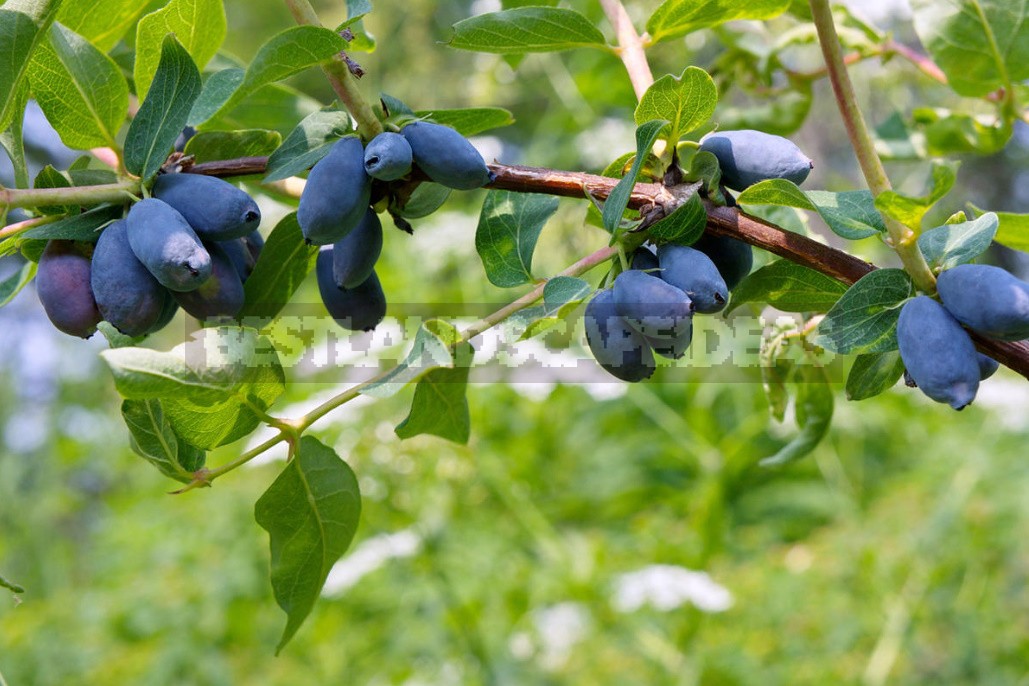
Lonicera edulis is valued for the first berries of the season, their excellent juicy taste and medicinal properties, for the quickness and hardiness of the bushes, and their unpretentiousness to environmental conditions.
Nutritional and medicinal properties
Honeysuckle fruits contain up to 13% of sugars, vitamins C (40-60 mg%), B1, B2, B6, B9, P, carotene, pectins, organic acids, tannins and coloring substances. They are also rich in salts of sodium, potassium, magnesium, phosphorus, and calcium; among the trace elements found in them are copper, barium, iodine, manganese, silicon, and selenium – the “vitamin of youth”. The leaves contain up to 200 mg of vitamin C.
In folk medicine, honeysuckle berries are used as a means to strengthen capillaries in cardiovascular diseases, hypertension, anemia. They are also used as a laxative and diuretic; they are used internally for diseases of the stomach, liver, and gall bladder. Externally the juice from the berries to treat herpes and ulcers, and the decoction of the leaves and flowers – diseases of the eye, throat and skin diseases. To treat wounds, crushed leaves are used, which is based on the antiseptic properties of honeysuckle.
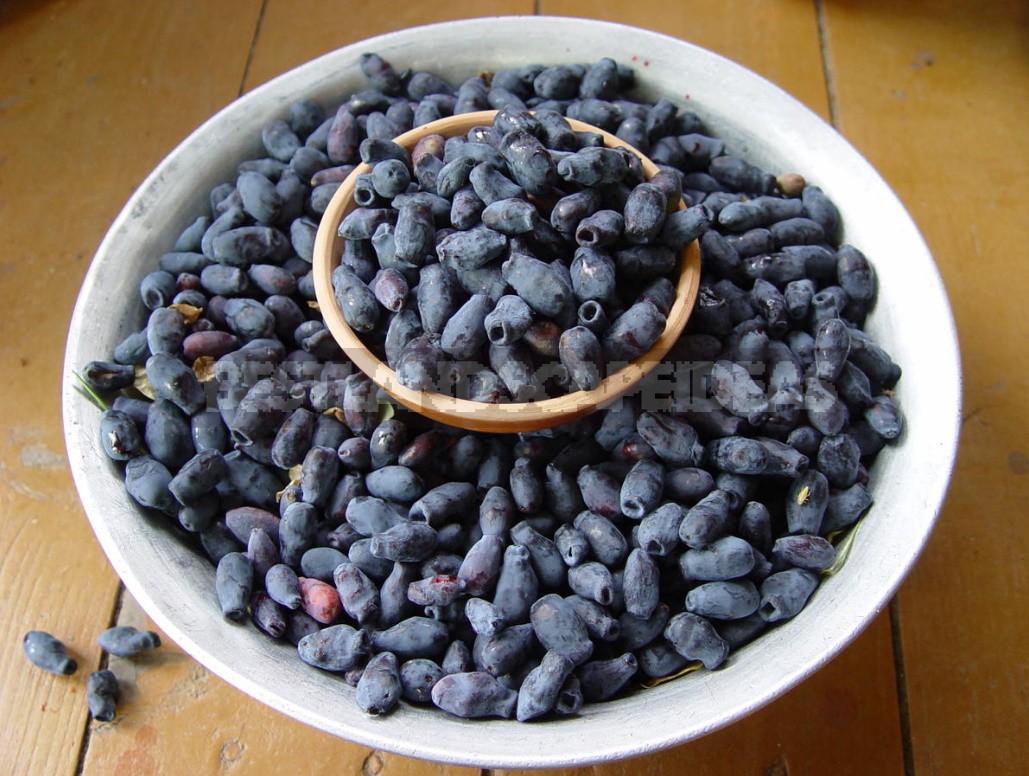
From dried young shoots collected during flowering, prepare a decoction, which is used as a diuretic, as well as as a means against hair loss (this decoction wash your head).
Biological portrait
Lonicera edulis is a deciduous shrub of the family Caprifoliaceae, genus Lonicera; it is a berry, medicinal and ornamental crop. In nature, it is found in the far East. It grows in wet places along the banks of rivers, on the outskirts of swamps, in clearings.
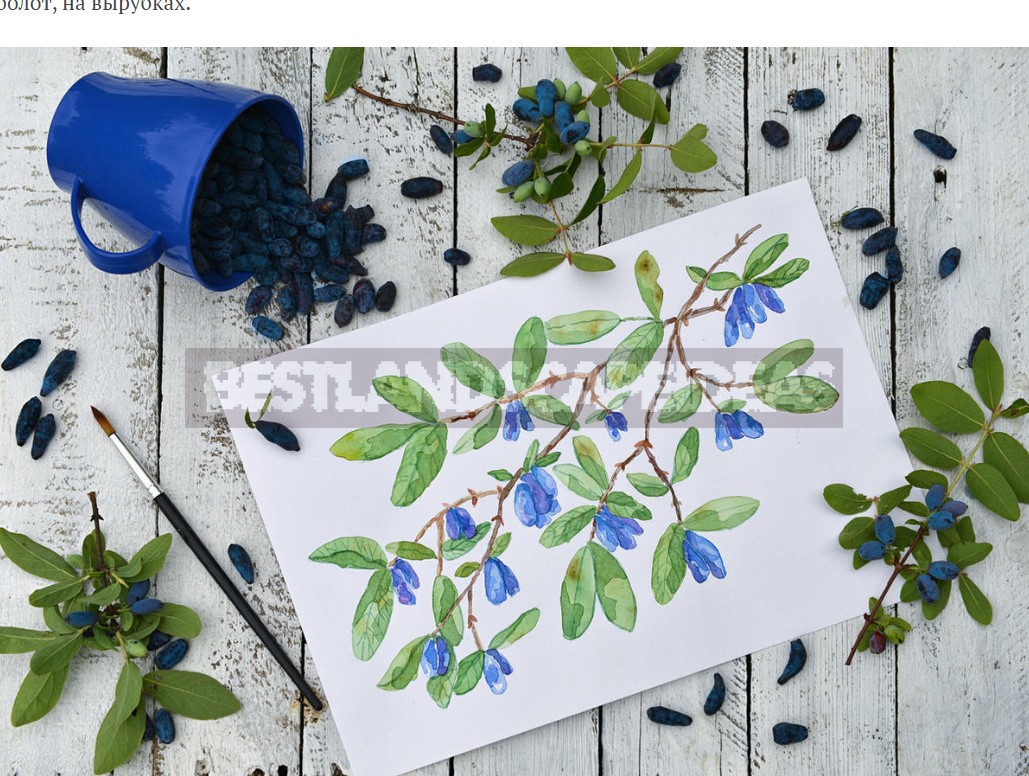
The plant can withstand light shading. The shrub reaches a height of 1.5 m and consists of 15-25 stems. Leaves opposite, various in shape: rounded, oval, ovate, lanceolate, etc. The flowers are pale yellow, collected in two-flowered inflorescences, appear with undeveloped leaves.
Honeysuckle is undemanding to heat, budding is observed a few days after the spring transition of the average monthly temperature through the zero mark. In mid-April, the plant begins to vegetate. Flowering lasts for a month, the flowers are pollinated by bumblebees, less often by bees. For better pollination and fruit tying on the garden plot, you need to have several varieties or forms of honeysuckle.
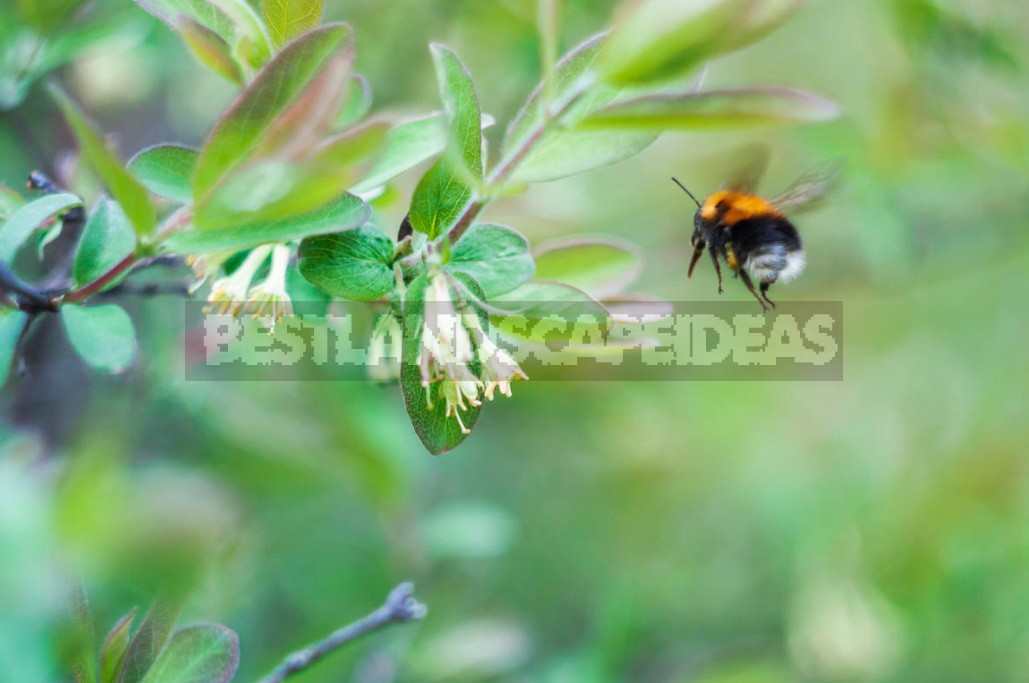
The first berries ripen in early June, 30-40 days after the beginning of flowering (7-10 days earlier than strawberries). Berries are blue with a blue waxy coating, the shape of the fruit is various: round, oval, cylindrical, fusiform, pitcher-shaped; the taste is juicy, sweet and sour, sometimes with a slight bitterness and aroma, the average weight is 0.8 g.
The plant is frost-resistant: it can withstand frosts of -44…-45 degrees, and flowers and ovaries-spring frosts up to -8 degrees. At the same time, provocative winter thaws are dangerous for it.
A feature of honeysuckle is its slow growth. In the first year of life, seedlings are 4-7 cm high, in the second – 20-35 cm, in the third-40-50 cm. Planted two-year-old seedlings begin to bear fruit in the 2-3 th year, a significant harvest is given in the 5th year. Plants grown from cuttings bear fruit in the second year after planting.
Honeysuckle bears fruit on an annual tree. The period of productive use in the garden is 20-25 years. Average yield of 1.0–2.5 kg of berries per Bush, maximum – 5 kg.
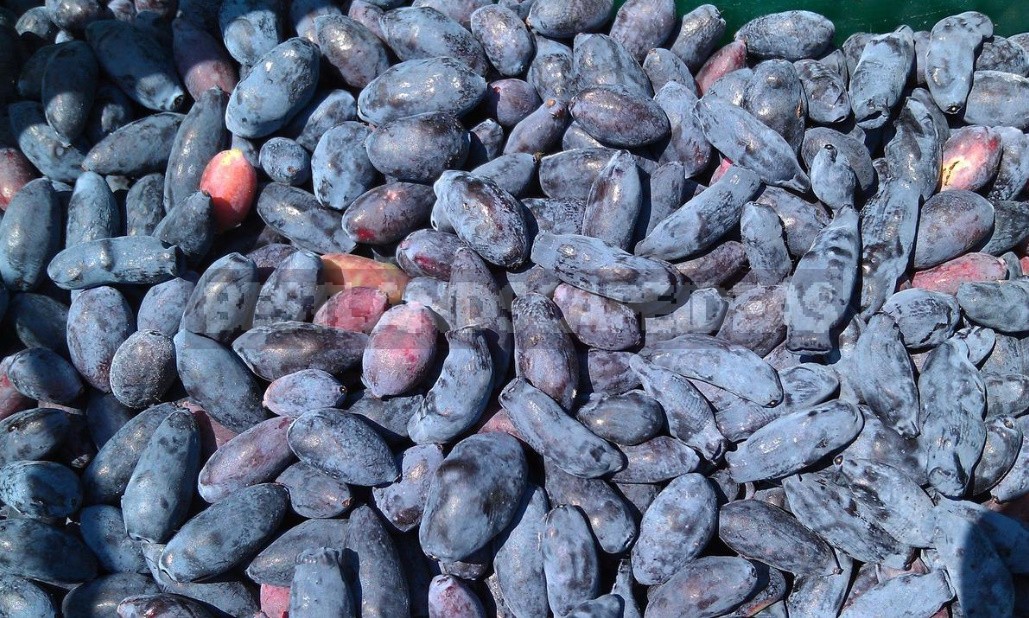
Honeysuckle-light and moisture-loving plant, but at the same time unpretentious: it grows well on all types of soil, except waterlogged and dry. The optimal reaction of the soil solution is slightly acidic (pH 5.5-6.5). The root system of the plant is rod-shaped, densely branched. On demand for light, moisture and soil, honeysuckle is close to black currant.
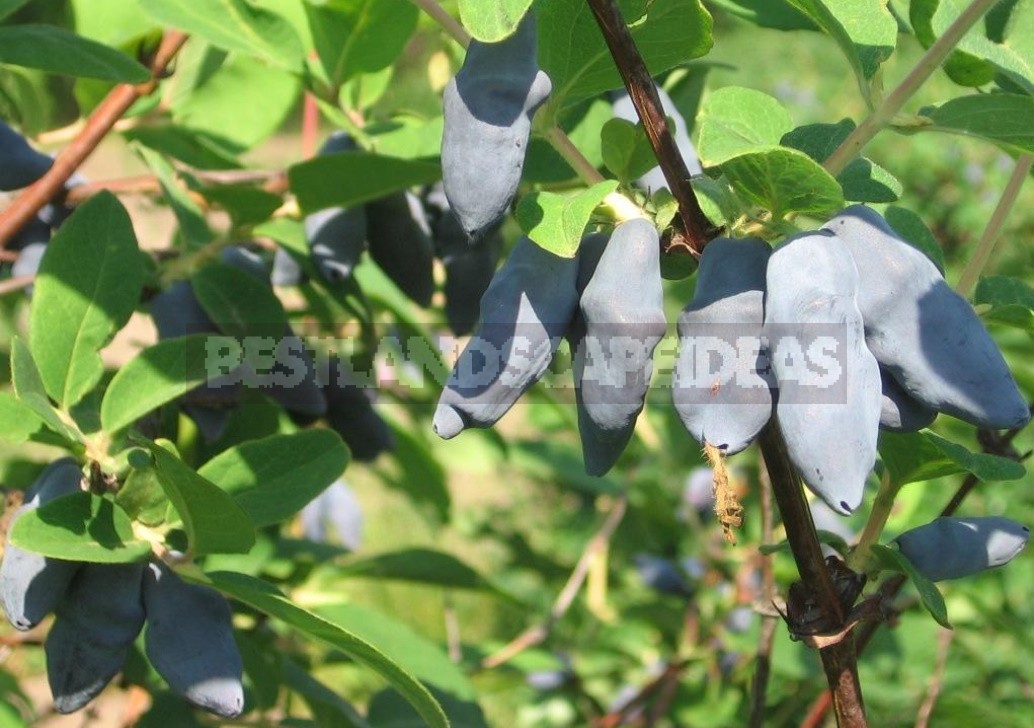
In the middle zone of honeysuckle varieties from the Far East, often in October-November, the apical buds open and there is a secondary flowering; in winter, the budding buds die, which leads to a decrease in yield.
Planting honeysuckle
The best planting material of honeysuckle is plants aged 2-3 years with a closed root system (in a container or plastic bag) more than 30 cm high, with two or three shoots. These seedlings take root well at any time of the growing season. Planting material with an open root system is dug out with a lump of earth just before planting.
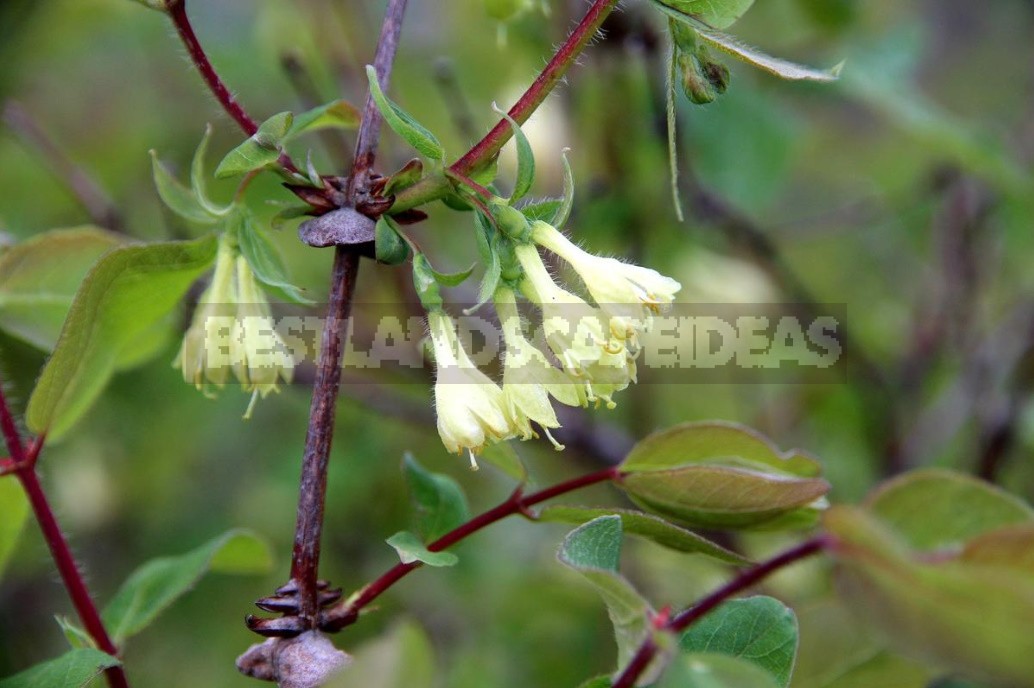
For better pollination, 2-3 varieties are placed on the site. Honeysuckle can be planted in spring, autumn, and even summer (after the end of growth), but the best time is autumn (October). If planted after harvest, the plants are dug out and replanted with a lump of earth.

The survival rate in spring planting is lower than in autumn, which is due to the very early start of vegetation of the plant. Field work begins in late April – may, when the honeysuckle shoots reach a length of 3-10 cm, and the bushes are already in bloom. Therefore, transplanting during this period negatively affects the condition of plants.
Good precursors for honeysuckle are potatoes, vegetables, and other row crops. Bushes are planted in a row at a distance of 1-1. 5 m from each other, between the rows-2 m. The landing pit is 50 cm deep and 50-60 cm wide. On sod-podzolic and gray forest medium-loamy soils, 10 kg of rotted manure or compost, 150-200 g of double superphosphate and potassium salt are added to one planting pit. Before planting, fertilizers are thoroughly mixed with the upper fertile layer.
After planting and settling the soil in the pit, the root neck should be at the level of the soil surface. Planted plants are not pruned, as this delays the beginning of fruiting. Water and mulch.
Care for plantings
In the first years, plants do not use the designated area of nutrition, so you can place vegetable crops between them (radish, lettuce, dill, parsley, onion, garlic); however, they can not be planted closer than 0.5 m from the bushes.

With a good filling of planting holes before planting seedlings, fertilizers are not applied in the first years. Starting from the third year (every 2-3 years), organic fertilizers (humus, compost) are added under the autumn digging of the soil at the rate of 8-10 kg per 1 square meter.
Fertilizing of young plants is carried out 2-3 times during the growing season. The first – no later than the beginning of April: for 1 sq.m contribute 20 g of urea, 30 g of ammonium nitrate or 40 g of ammonium sulfate. Summer feeding is done in early July after harvest to strengthen the second wave of growth. It is combined with loosening the soil. Liquid top dressing is carried out with diluted slurry (1:4) at the rate of 10 liters per Bush.
When preparing a solution of complex mineral fertilizer, 25-30 g of the drug is dissolved in 10 liters of water and spent 5 liters per plant. When using nitrophoska or nitroammophos 20 g of the fertilizer is diluted in 10 liters of water. For top dressing, you can also use a ready-made complete mineral fertilizer (60-80 g per 1 sq. m).
Acidic soils are limed once every 3-4 years (200-300 g of lime or chalk per 1 sq. m) for autumn digging. In plantings older than 6-7 years, fertilizers are applied twice per season – in spring and autumn, increasing the dose by 1.5 times. During the growing season, systematic weed control and constant loosening of the soil is necessary. The main soil treatment – digging to a depth of 12-15 cm-is carried out in the autumn after leaf fall (near the bushes dig smaller, in the aisles-deeper.
Pruning and shaping the bushes
In the first years after planting, form a Bush of 10-15 strong stems. During 5-7 years, the plants are usually not cut, the branches are not shortened, since a significant part of the crop is lost along with the tops. Care for the crown during this period is reduced to removing lying and broken branches.
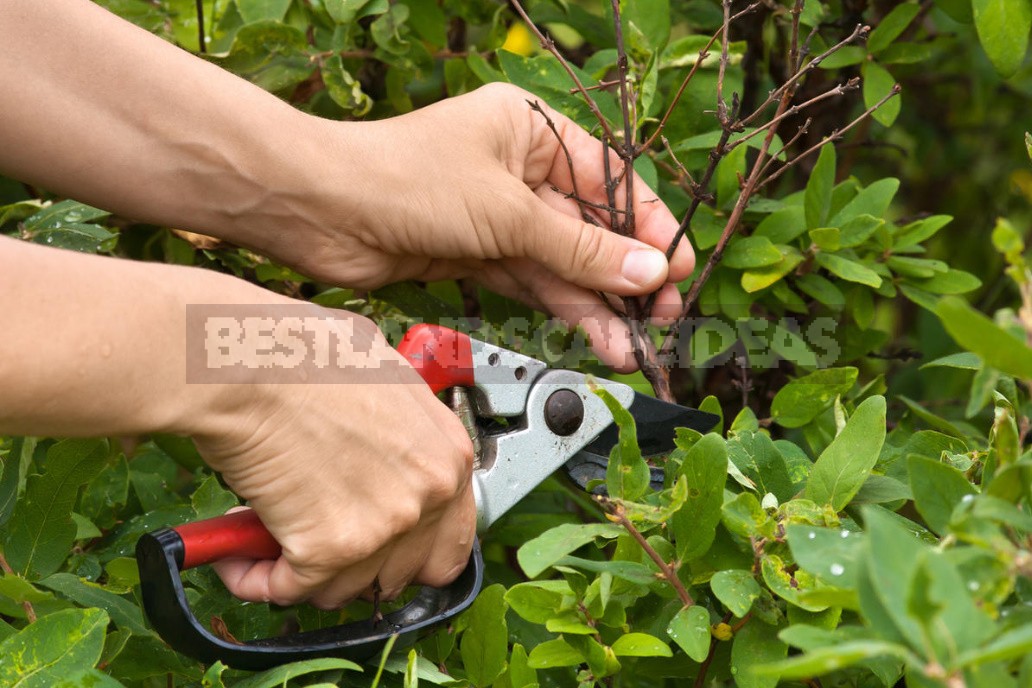
Regular anti-aging pruning is carried out on the 8-10 th year after planting. The best time for pruning is autumn, after leaf fall. In the spring, this should be done no later than the end of March. Then remove the aging tip of the skeletal branch, making a cut at the young branching, located in the middle of the branch, and not at the base of the Bush (pruning for translation). Then thin out the branches, clearing the remaining small overgrown branches, thickening the crown and growing inside, as well as weakened and unproductive. Thinning of the crown contributes to the appearance of strong growth, and the next year after pruning the crop increases significantly.
For plants aged 20-25 years, the most effective method of rejuvenation is pruning all skeletal branches at a height of 30-40 cm from the soil level (pruning on a stump). The next year after autumn pruning, many powerful shoots are formed on the stumps, which are left for fruiting. In the spring of the third year, after a rejuvenating pruning, the Bush is formed, leaving 10-15 of the strongest branches in it after thinning, and the rest are cut out.
A major infestation
Especially annoying plants are honeysuckle Platyptilia cladactyla Den et Schiff, Chionaspis salicis L., Semiaphis lonicerina Shap. No dangerous diseases have been detected yet.
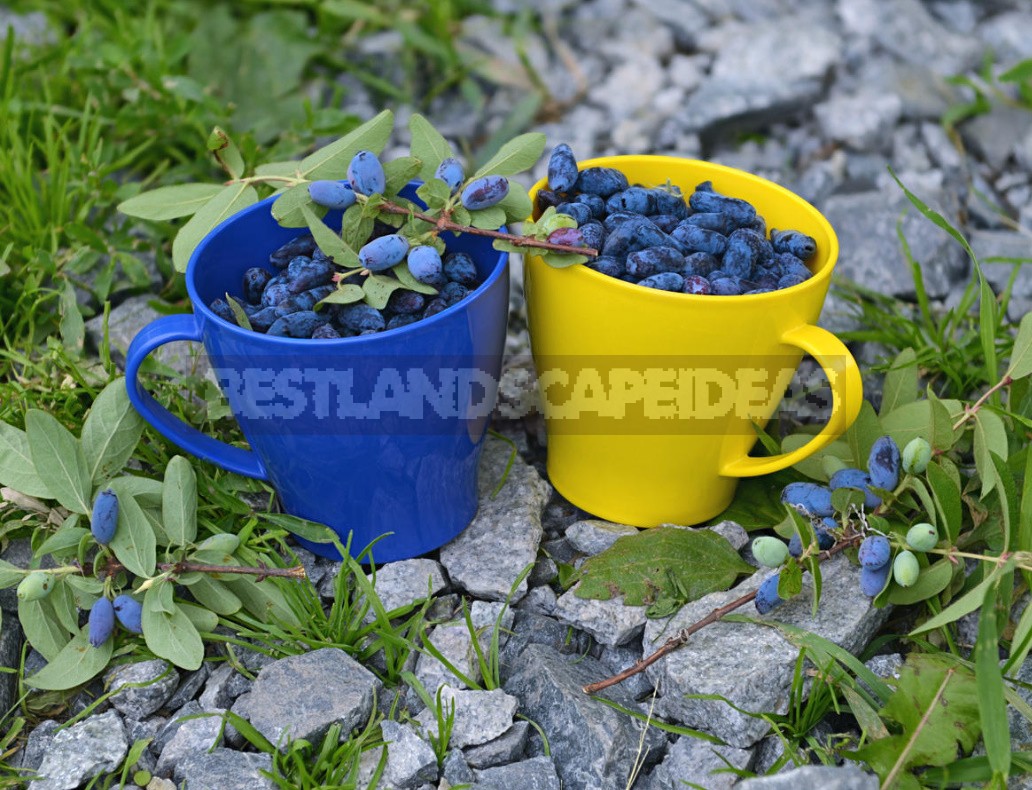
Use of honeysuckle in cooking
Honeysuckle berries are consumed fresh, and are also used for various types of processing: jam, compote, juice, wine. Fruits are also dried, frozen,and dried.
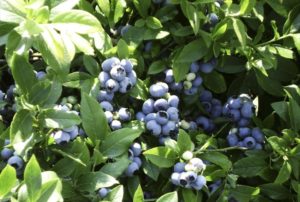
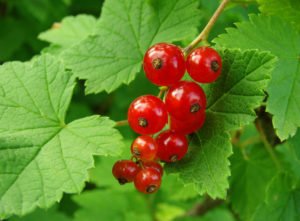
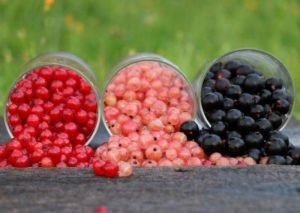

Leave a Reply